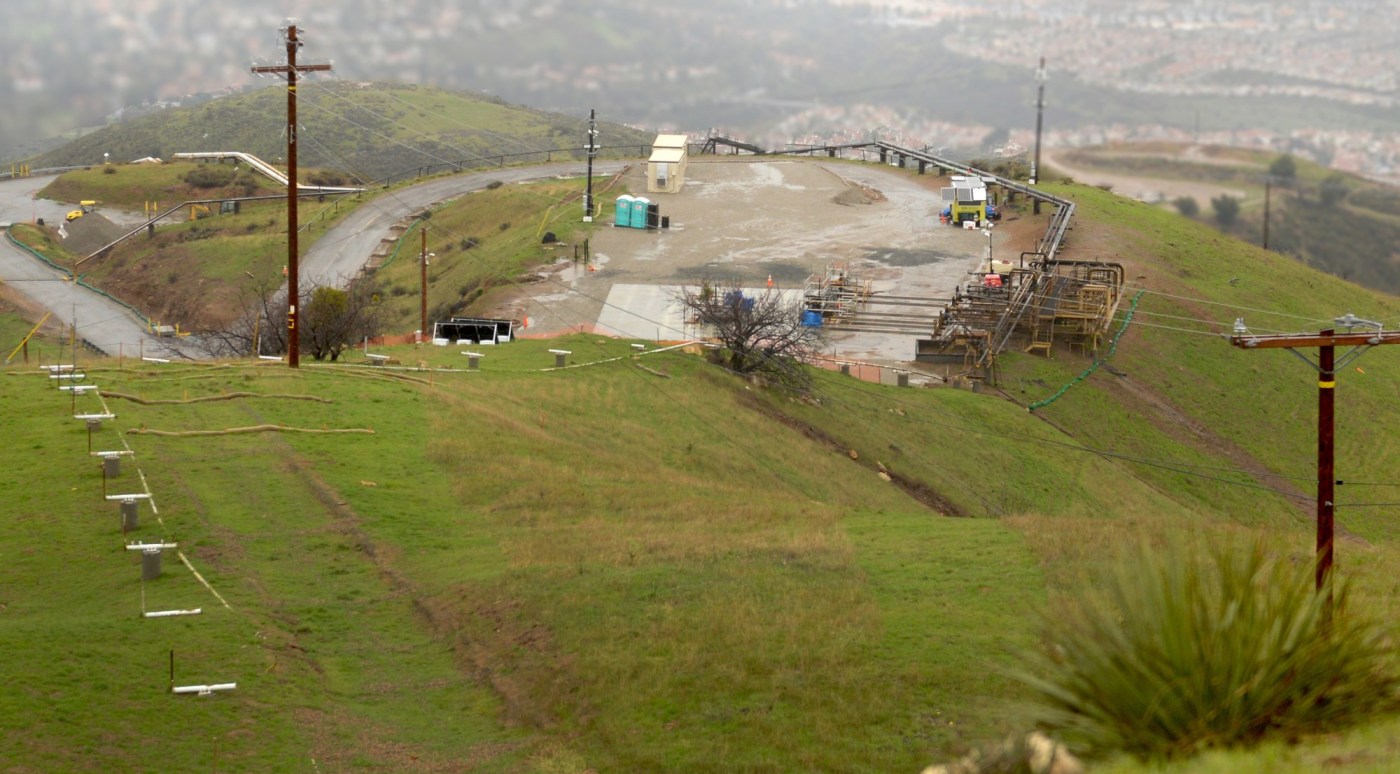Top Stories
Aliso Canyon Gas Leak Turns 10: Residents Reflect on Impact

UPDATE: Today marks the tenth anniversary of the infamous Aliso Canyon natural gas leak, a disaster that has left lasting scars on the community of Porter Ranch, California. The October 23, 2015 blowout released over 100,000 tons of methane into the atmosphere, becoming the largest natural gas leak in U.S. history. As residents, school employees, and business owners reflect on the event, the human cost continues to resonate.
This catastrophic event began when SoCalGas discovered a leak at its underground gas storage facility near Oat Mountain. The leak was reported around 3:15 p.m. by a Termo Company employee who noticed a strong gas smell. Initial inspections failed to detect the leak, but it quickly escalated, leading to a full-blown crisis.
The leak was publicly acknowledged on October 26, but it wasn’t until October 31 that SoCalGas sent letters to approximately 8,000 residents, apologizing for the delay in communication. Reports indicated that by mid-November, the well was releasing between 500,000 to 1 million cubic feet of methane daily, prompting the Los Angeles County Department of Public Health to order SoCalGas to provide temporary relocation assistance for affected families.
As the community dealt with symptoms like dizziness and respiratory issues, the fallout from the leak grew. By December 18, 2015, over 2,000 households had relocated due to health concerns. The state declared a state of emergency, enabling federal and state assistance for those impacted.
The leak was finally controlled on February 11, 2016, and SoCalGas officially sealed the well a week later. However, the repercussions continue. SoCalGas has faced lawsuits, including a $4.3 million settlement for failing to promptly report the leak, and ongoing scrutiny from both state and federal regulators.
In response to the disaster, Governor Gavin Newsom has called for stricter safety regulations, emphasizing the need for accountability in the wake of such environmental threats. The incident has sparked significant public outcry and advocacy for reducing reliance on fossil fuels, with many residents pushing for a transition to all-electric homes.
As the community gathers to commemorate this somber anniversary, the lingering effects of the Aliso Canyon disaster serve as a reminder of the urgent need for improved safety measures and environmental protections. Residents are urged to stay informed about ongoing developments and potential legislative changes that could affect their future.
Next Steps: Watch for reactions from local officials and community leaders in the coming days, as discussions continue around the future of the Aliso Canyon facility and the broader implications for energy policy in California. The Aliso Canyon saga is far from over, and its impact will be felt for years to come.
-

 Business1 week ago
Business1 week agoIconic Sand Dollar Social Club Listed for $3 Million in Folly Beach
-

 Politics1 week ago
Politics1 week agoAfghan Refugee Detained by ICE After Asylum Hearing in New York
-

 Health1 week ago
Health1 week agoPeptilogics Secures $78 Million to Combat Prosthetic Joint Infections
-

 Lifestyle1 week ago
Lifestyle1 week agoJump for Good: San Clemente Pier Fundraiser Allows Legal Leaps
-

 Science1 week ago
Science1 week agoResearchers Achieve Fastest Genome Sequencing in Under Four Hours
-

 Health1 week ago
Health1 week agoResearcher Uncovers Zika Virus Pathway to Placenta Using Nanotubes
-

 World1 week ago
World1 week agoUS Passport Ranks Drop Out of Top 10 for First Time Ever
-

 Entertainment1 week ago
Entertainment1 week agoJennifer Lopez Addresses A-Rod Split in Candid Interview
-

 Business1 week ago
Business1 week agoSan Jose High-Rise Faces Foreclosure Over $182.5 Million Loan
-

 Science1 week ago
Science1 week agoMars Observed: Detailed Imaging Reveals Dust Avalanche Dynamics
-

 Top Stories7 days ago
Top Stories7 days agoChicago Symphony Orchestra Dazzles with Berlioz Under Mäkelä
-

 World1 week ago
World1 week agoRegional Pilots’ Salaries Surge to Six Figures in 2025









